Effect of f i bre orientations on the mechanical properties of kenaf-aramid hybrid composites for spall-liner application
R.YAHAYA,S.M.SAPUAN*,M.JAWAID,Z.LEMAN,E.S.ZAINUDIN,c
aDepartment of Mechanical and Manufacturing Engineering,Universiti Putra Malaysia,43400 UPM Serdang,Selangor,Malaysia
bScience and Technology Research Institute for Defence (STRIDE),43000 Kajang,Selangor,Malaysia
cLaboratory of Biocomposite Technology,Institute of Tropical Forestry and Forest Products (INTROP),Universiti Putra Malaysia,43400 UPM Serdang,Selangor,Malaysia
dAerospace Manufacturing Research Centre (AMRC),Faculty of Engineering,Universiti Putra Malaysia,43400 UPM Serdang,Selangor,Malaysia
eDepartment of Chemical Engineering,College of Engineering,King Saud University,Riyadh,Saudi Arabia
Effect of f i bre orientations on the mechanical properties of kenaf-aramid hybrid composites for spall-liner application
R.YAHAYAa,b,S.M.SAPUANa,c,d,*,M.JAWAIDc,e,Z.LEMANa,E.S.ZAINUDINa,c
aDepartment of Mechanical and Manufacturing Engineering,Universiti Putra Malaysia,43400 UPM Serdang,Selangor,Malaysia
bScience and Technology Research Institute for Defence (STRIDE),43000 Kajang,Selangor,Malaysia
cLaboratory of Biocomposite Technology,Institute of Tropical Forestry and Forest Products (INTROP),Universiti Putra Malaysia,43400 UPM Serdang,Selangor,Malaysia
dAerospace Manufacturing Research Centre (AMRC),Faculty of Engineering,Universiti Putra Malaysia,43400 UPM Serdang,Selangor,Malaysia
eDepartment of Chemical Engineering,College of Engineering,King Saud University,Riyadh,Saudi Arabia
This paper presents the effect of kenaf f i bre orientation on the mechanical properties of kenaf-aramid hybrid composites for military vehicle's spall liner application.It was observed that the tensile strength of woven kenaf hybrid composite is almost 20.78%and 43.55%higher than that of UD and mat samples respectively.Charpy impact strength of woven kenaf composites is 19.78%and 52.07%higher than that of UD and mat kenaf hybrid composites respectively.Morphological examinations were carried out using scanning electron microscopy.The results of this study indicate that using kenaf in the form of woven structure could produce a hybrid composite material with high tensile strength and impact resistance properties.
Hybrid composites;Spall-liner;Aramid f i bre;Porosity;Mechanical testing
1.Introduction
The search for alternative f i bres as a replacement for manmade f i bres has had continued.The well-known advantages of natural f i bres are low density,low cost,its availability,renewability,ease of production,low process energy,non-abrasive,good acoustic property,acceptable specif i c strength and modulus,low cost,easily available,and easy recyclability[1-5].However,there are some limitations which required further improvement such as its moisture absorption due to hydrophobicity,dimensional stability and poor wettability,low thermal stability during processing and its poor adhesion with synthetic f i bres [5,6].The combination of two or more natural and synthetic f i bres into a single matrix has led to the development of hybrid composites [7].Natural-synthetic f i bre hybrid composites are increasingly used in a wide range of applications [8].The advantages of hybridisation are fully utilised to reduce the use of synthetic f i bres which are generally nonenvironmentally friendly.Hybrid composites can be made from artif i cial f i bres,natural f i bres and with a combination of both artif i cial and natural f i bres [9].
Kenaf f i bres (Hibiscus cannabinus L.)have a potential as an alternative for partial replacement of conventional materials or synthetic f i bres as reinforcement in composites [10].It is reported in the literature that kenaf are already being used in hybrid form with synthetic materials such as glass [8,11-13],carbon [14],and polyethylene terephthalate (PET)[15].Aramid is one of the synthetic f i bres used in hybrid composites.Aramid fi bres are a class of heat-resistant and strong synthetic f i bres which are widely used in aerospace and military applications,for ballistic rated body armour fabric and ballistic composites. Para-aramid f i bre (Kevlar)is one of the commercially available aramid f i bres and provides a unique combination of toughness,extra high tenacity and modulus,and thermal stability [16]. Kenaf-Kevlarhybridisation fordefenceapplication was reported in Refs.[17,18].
There are factors that inf l uence the properties of kenaf hybrid composites.One of the factors is the hybrid types(inner-laminar and interlaminar)[19].Pearce et al.[20]relates the architecture and permeability of the fabrics and mechanical properties of woven carbon-f i bre fabrics reinforced epoxy composites.Khan et al. [21]studied the inf l uence of woven structure and direction on the mechanical properties,i.e.tensile,f l exural and impact properties.It was reported that the mechanical properties of untreated woven jute composite (in warp direction)were improved compared with the non-woven. Azrin Hani et al.[22]studied the mechanical analysis of woven coir and kenaf natural f i bres.They found that the structure used as a composite reinforcement in turn produced better mechanical properties.Pothan et al. [23]studied composites of woven sisal and polyester using three different weave architectures(plain,twill and matt)with special reference to resin viscosity,applied pressure,weave architecture,and f i bre surface modif ication.This study provided detailed information on the effect of weaving,architecture and f i bre content on the mechanical properties of the hybrid composites.Karahan et al.[24]observed the decrease in the mechanical properties of carbon-epoxy composites as a result of weaving structure.Karahan et al. [25]determined the effect of weaving structure and hybridisation on the low velocity impact properties of carbon-epoxy composites.It was reported that the best result obtained from twill woven composite with the energy absorption capacity was increased by around 9-10%with hybridisation.Alavudeen et al.[26]studied the effect of weaving patterns and random orientation on the mechanical properties of banana,kenaf,and banana/kenaf f i bre-reinforced hybrid polyester composites. They found that the plain type showed improved tensile properties compared to the twill type in all the fabricated composites.
Based on the literature studies,it was found that mechanical properties of kenaf-aramid hybrid composites were not reported.The present study aimed to evaluate the mechanical performance of kenaf-aramid hybrid composites for spall-liner application.Since the properties of a composite are often determined by the properties of the components and the fraction of inclusions [27],there is a requirement to study the effect of f i bre properties in hybrid composite.In this study,the effects of kenaf f i bre orientation on the physical and mechanical properties of kenaf-Kevlar hybrid laminate composites were studied. The kenaf f i bres and Kevlar were arranged in similar sequences to prepare the hybrid laminated composites.The kenaf tested are in the form of woven and non-woven structures.The effects of the f i bre content and its morphology were also analysed.
2.Materials and methods
2.1.Materials
Aramid fabric used in this study is the plain weaved structure Kevlar 129.Three types of kenaf f i bres were used in this study: woven,unidirectional and mat.The woven kenaf was produced by the interlacement of warp and weft yarns by using table loom.The yarns were obtained from local suppliers,Innovative Pultrusion Sdn Bhd.The unidirectional samples consist of kenaf yarn (800 tex)cross plied at 0°/90°.No chemical treatment was conducted on the kenaf f i bres prior to this study.The resin used in this study is DER 331 liquid epoxy with a density of 1.08 g/m3.The resin was cured using joint mine type (905-3S),cycloaliphatic amines.

Fig.1.Illustration of kenaf-Kevlar hybrid composites.
2.2.Fabrication of composite laminates
Hand lay-up method was adopted to fabricate laminates of Kevlar 129 and kenaf in epoxy resin.The specimen consists of six layers of Kevlar with the kenaf f i bres in the middle as shown in Fig.1.Kenaf and Kevlar fabric were hand lay-up with the epoxy matrix by mixing epoxy resin (DER 331)and amine hardener in the ratio of 2:1.Two thick mild steel plates are used as a mould (20 × 20 cm)in the fabrication process.All the mould surfaces were sprayed with a mould release agent to prevent adhesion of composites to the mould after curing and also to ensure smooth sample surface.Composites were cured by applying compression pressure using dead weights on the top of the mould and cured at room temperature for 24 hours. The specimens were also post-cured at 70 °C for 2 hours after removing from the mould.The composition of hybrid composites is shown in Table 1.
2.3.Density and void contents
The density of the hybrid laminates was measured according to theASTM D792 standards.Rectangular samples with size of 10 mm × 10 mm were used.Distilled water at room temperature was used as the immersion f l uid and the mass was measured using a digital balance with a 10-3g resolution.Five specimens were tested and an average was taken.To analyse the void percentage in the composite laminates,the ASTM D2734 standard was used.The void content was determined from thetheoretical and the experimental density of the composites by using Eqs.(1)and (2):

Table 1Hybrid composite formulation.

wfis the f i bre weight fraction,wmis the matrix weight fraction,ρfis the f i bre density,and ρris the resin density.
2.4.Dimensional stability and water absorption test
The dimensional stability of kenaf-Kevlar hybrid composites was determined by water absorption and thickness swelling test.Three samples of each composite were immersed in distilled water at room temperature.After a certain period of time,the samples were removed from the water,wiped with a clean tissue paper before the weight and thickness value was measured.The percentage of water absorption was calculated by the weight difference using the following equation:

where weis the relative weight change or water absorption percentage,wtis the weight at time t,and w0is the initial weight at t=0,and t is the soaking time.
The percentage of thickness swelling was estimated by

where Treis the percentage of thickness swelling,Ttis the thickness at time t,and T0is the initial thickness at t=0.
2.5.Mechanical testing of composites
Tensile test was conducted to determine the stress-strain behaviour of Kevlar-kenaf hybrid laminated composites.The test was carried out using Instron 33R 4484 testing machine based on ASTM D 3039 on samples with a size of 200 mm × 25 mm × actual thickness.A standard head displacement at a speed of 5 mm/min was applied.Flexural test was conducted by using 3-point loading using Instron 33R 4484 testing machine according to the ASTM D 790-03.The rectangular samples with dimensions of 100 mm × 20 mm were cut using a circular saw.The tests were conducted at a crosshead displacement rate of 5 mm/minute.For each test,three samples were tested at room temperature and average data were taken as a f i nal result.For Charpy impact,the test samples are prepared and tested according to the ASTM D256.Five un-notched samples with dimensions of 80 mm × 10 mm × respective thickness from each composition were tested.The composite toughness was analysed and reported.
2.6.Scanning electron microscopy (SEM)
Kenaf-Kevlar hybrid composite samples were observed using a scanning electron microscope Leo 1430VP.The cross-sectional surfaces of the samples were cut and the scanning electron micrographs were taken to observe the interface adhesion of f i bre layers and the matrix of the hybrid composites. Prior to the analysis,the hybrid composite samples were coated with palladium using a sputter coater.

Table 2Physical properties of hybrid composites.
3.Results and discussion
3.1.Density and void
The measured density composites are listed in Table 2.It was observed that the density of samples W and UD are higher(1.10 g/cm3)thanothercomposites.Atthesametime,thedensity of sample M is 0.87 g/cm3,which is lower than other composites. The presence of voids inside the samples was calculated by comparing the measured density with the theoretical density.It was found that the contents of the void in samples W,UD and M are 7.32%,8.39%and 26.70%respectively.The result may be due to less air entrapment in the hybrid composites with woven kenaf structure,which led to lower void content.Measurement of void content is important as it is a critical imperfection in f i bre reinforced composite materials [28].
3.2.Thickness swelling test

Fig.2.Thickness swelling of hybrid composites.
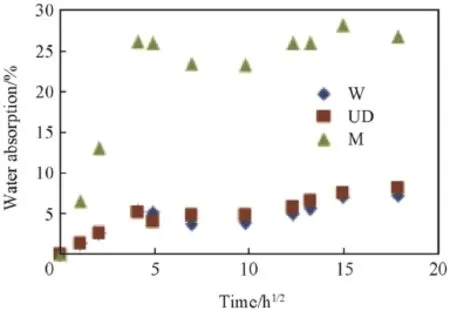
Fig.3.Water absorption of hybrid composites.
The result of thickness swelling test was shown in Fig.2. Sample UD shows the highest thickness swelling (3.03%)among all the samples.The woven sample shows moderate(2.20%)thickness swelling and the mat sample is lower(2.04%).The f i gure also showed that the increase in immersion time will allow water absorption,thus increases the thickness swelling of the hybrid composites until a constant thickness was obtained.According to Jawaid et al.[29]the hydrophilic properties of lignocellulose materials and the capillary action will cause the intake of water when the samples were soaked inwater and thus increase the dimension of the composite.The presence of voids also related to the thickness swelling of as the higher the void contents increase the thickness swelling of composites[29].However,the result in swelling thickness is contradictory to this statement.This may be the effect of the hybridisation of kenaf with Kevlar,synthetic f i bres.According to Ray and Rout[30],water molecules attract the hydrophilic groups of natural f i bres and react with the hydroxyl groups (—OH)of the cellulose molecules to form hydrogen bonds.Thickness swelling occurred as the water molecules penetrate the natural f i brereinforced composite through micro-cracks and reduce the interfacial adhesion of f i bre with the matrix.Higher Kevlar content in sample M resulted in higher f i bre-matrix interfacial adhesion,thus lower thickness swelling.Khalil et al. [31]reported that the water absorption and the thickness swelling of natural f i bre reinforced with polyester composites are improved by the incorporation of synthetic f i bres.The contradiction of water absorption and thickness swelling in this study may also be due to the exposure of the lignocellulosic f i bre on the surface of the composite [32].
3.3.Water absorption test
The water absorption test was used to determine the amount of water absorbed by hybrid composite which consists of woven,UD and mat kenaf layers under specif i ed conditions. Fig.3 shows the behaviour of water absorption in the woven,mat and unidirectional(UD)samples.Initially,all samples had a sharp linear increase in moisture absorption and reached their saturation state with maximum moisture content of 8.07%for W and UD samples and 26.84%in sample M after 320 h of water immersion respectively.It was found that samples with woven and UD kenaf absorb less water before it reached a saturation state and the samples with kenaf mat recorded the highest water absorption before reaching the saturated state. Similar in thickness swelling,water absorption was also inf l uenced by the void content of the composite;the weight of the composite will increase by trapping the water inside the voids[29].In general,moisture diffusion in a composite depends on factors such as the volume fraction of f i bre,f i bre orientation,f i bre type,area of exposed surfaces,surface protection voids,viscosity of the matrix,humidity and temperature [33].

Fig.4.Stress-strain curves of hybrid composites.
3.4.Effect of kenaf f i bre orientations on the tensile properties of the hybrid composites
Tensile strength of hybrid composites determined its ability to resist breaking under tensile stress.The tensile properties of kenaf-Kevlar hybrid composites are compared with various kenaf structures.Fig.4 shows the tensile stress-strain curves of the tested samples.The curves show the brittleness and ductile nature of the composites.For woven and UD samples,the samples elongated with the increased stress level up to certain values where the kenaf layer failure occurred.The curve is continuous until total failure of the samples occurred as the outer layers of the Kevlar fabric break.No such observation was reported in the mat samples.Based on the curves,it was observed that the elongation at the break of woven samples is lesser than the other samples.The tensile properties of samples are compared and given in Fig.5.The tensile strength and tensile modulus are found to be higher,145.8 MPa and 3336.71 MPa,respectively,for composites with woven kenaf. The tensile strength and modulus of sample UD were recorded in intermediate with the values of 115.36 MPa and 2368.48 MPa.The lowest tensile properties are observed in non-woven kenaf sample M with the strength and modulus of101.56 MPa and 1888.39 MPa respectively.The properties of the samples with woven kenaf are improved from the previous report [34].It was found that the use of table looms weaved kenaf fabric compared with hand-weaved in earlier produced kenaf fabric.The result shows that the kenaf f i bre orientation has an inf l uential effect on the tensile properties of the composites.The advantages of woven f i bre structure were observed in a previous work [26].There are many other advantages of using woven composite such as stated in the published works[35,36].

Fig.5.Tensile properties of hybrid composites.
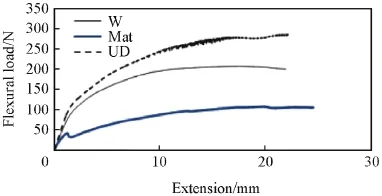
Fig.6.Load-extension curves of hybrid composites.
3.5.Effect of kenaf orientations on the f l exural properties of the hybrid composites
The f l exural test is useful in quantifying the properties of composite mainly in structural applications.The f l exural loadextension curves of woven,UD and mat kenaf-Kevlar hybrid composites are shown in Fig.6.The curves indicate the failure mode of the composites.According to Pothan et al. [23]the abrupt failure of the composite can be related to f l exural failure and the gradual decrease in loading indicates shear failure as the predominant mode.In this study,the failure mode can be classif i ed as a mixed failure mode.Fig.7 shows the variation in the f l exural properties of kenaf-Kevlar hybrid composites.It is observed that the f l exural strength of sample UD is the highest(100.3 MPa),followed by weaved structure and mat structure: 94.21 MPa and 35.82 MPa respectively.In terms of f l exural modulus the woven samples are found to be the highest compared with other samples.From the works of earlier researchers it was found that the f i bre orientation inf l uences the properties of the composites [37].The positive effect of woven structure was also observed by Alavudeen et al.[26].
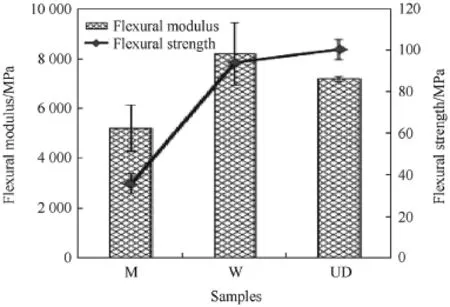
Fig.7.Flexural properties of hybrid composites.
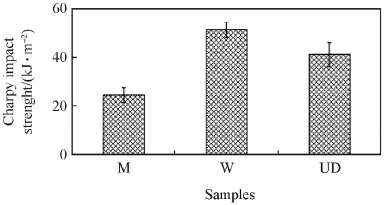
Fig.8.Charpy impact strength of hybrid composites.
Multiple factors can inf l uence the f l exural strength and modulus of hybrid composites.One factor might be the interfacial bonding between the f i bres and epoxy matrix that facilitates load transfer.Fibre volume fraction and f i bre orientation were determined as important factors in the mechanical properties of the composites [38].Higher percentage of voids has also a negative effect on the f l exural modulus and strength of the composites [39].
3.6.Effect of kenaf orientations on the Charpy impact strength of the hybrid composites
The Charpy impact test was conducted to determine the amount of energy absorbed by the hybrid composites during fracture.The results of the Charpy impact test are presented in Fig.8.It is observed that the value of Charpy impact strength is higher in woven samples (51.41 kJ/m2)compared with the UD samples (41.24 kJ/m2)and mat samples (24.64 kJ/m2).The impact properties of composites depend on the interlaminar and interfacial adhesion between the f i bre and the matrix.In this study it was found that the impact strength of kenaf-Kevlar hybrid composites is in similar trend as the tensile properties. This is in contrast with the observation of Van der Oever et al.[40]that the Charpy impact strength decreases with increasing f i bre internal bonding and enhanced f i bre-matrix adhesion,which is opposite to the trend for the tensile and f l exural properties.The impact toughness of kenaf/glass hybrid composites was found to be inf l uenced by the f i bre orientation [41].It was found to be affected by f i bre orientation in glass f i bre reinforced polymer matrix composites [42].In determining the inf l uences of weaving architectures on the impact resistance of multi-layer fabrics,Yang et al. [43]found that the weaving architectures and fabric f i rmness are less inf l uential on the overall ballistic protection of multi-ply systems compared to the single-ply cases.
Generally,based on the above discussion,it was found that the effect of f i bre orientations is important to the mechanical properties of hybrid composites as well as for ballistic resistantapplication [44].Kenaf-Kevlarhybridcomposites may f i nd applications as alternatives to current spall-liners which are aimed at protection from impact by small fragments.

Fig.9.Woven-Kevlar hybrid composite.

Fig.10.UD-Kevlar hybrid composite.
3.7.Scanning electron microscope
Figs.9-11 show the SEM surface morphology of kenaf-Kevlar hybrid composites.The cross-sectional observation of untested samples was focused on the f i bre-matrix interfacial and void content in the matrix.The interstitial regions which serve as crack initiators are observed in woven and UD samples.Fig.11 reveals a weak f i bre/matrix interface with voids and cracks.This could be responsible for the deterioration of the stress transfer from the matrix to the f i bres,thus affecting the mechanical properties of the composites [11].
4.Conclusions
The outcomes of the present work are the effect of kenaf fi bre orientation on the mechanical properties of hybrid composites.The effect of kenaf structure (woven,non-woven UD and non-woven mat)was investigated along with the tensile, fl exural and impact performance of the prepared composites. The following conclusions are made based on the extensive experimental study:
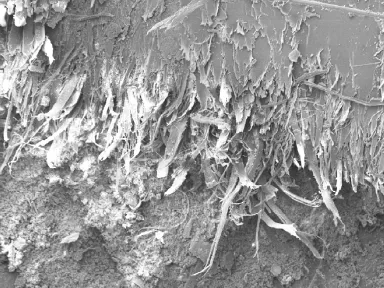
Fig.11.Mat kenaf-Kevlar hybrid composite.
1)The experiments show that a non-woven mat kenaf-Kevlar hybrid composite has low density as there are high void contents.Hybrid composites with woven and UD kenaf are almost similar in density and void content.
2)The addition of kenaf affects the water absorption behaviour of the composites.The hydrophilic nature of kenaf f i bres and void content are responsible for the water absorption and this adversely affects the f i bre swelling and dimensional stability.
3)The tensile and Charpy impact strength properties of woven kenaf-Kevlar composite are higher than other hybrid composites.On the contrary,the f l exural strength of the hybrid composites with UD kenaf is slightly higher compared with a hybrid with woven kenaf.
4)The scanning electron micrograph of the hybrid composite exhibited higher void content in the mat kenaf composites compared with the UD and woven kenaf.
Acknowledgments
The authors would like to show their appreciation to UniversitiPutraMalaysia and Scienceand Technology Research Institute for Defence (STRIDE)for supporting the research activity.
[1]Leman Z,Sapuan SM,Azwan M,Ahmad MMHM,Maleque MA.The effect of environmental treatments on f i ber surface properties and tensile strength of sugar palm f i ber-reinforced epoxy composites.Polym Plast Technol Eng 2008;47:606-12.
[2]Anwar UMK,Paridah MT,Hamdan H,Sapuan SM,Bakar ES.Effect of curing time on physical and mechanical properties of phenolic-treated bamboo strips.Ind Crops Prod 2009;29:214-19.
[3]Sapuan SM,Harimi M,Maleque MA.Mechanical properties of epoxy/coconutshellf i llerparticlecomposites.Arab JSciEng 2003;28:171-81.
[4]Rashdi AAA,Sapuan SM,Ahmad MMHM,Khalina A.Combined effects of water absorption due to water immersion,soil buried and naturalweather on mechanical properties of kenaf fi bre unsaturated polyester composites (KFUPC).Int J Mech Mater Eng 2010;5:11-17.
[5]Jawaid M,Abdul Khalil HPS,Abu Bakar A.Woven hybrid composites: tensile and fl exural properties of oil palm-woven jute fi bres based epoxy composites.Mater Sci Eng A 2011;528:5190-5.
[6]Saw SK,Sarkhel G,Choudhury A.Effect of layering pattern on the physical,mechanical,and thermal properties of jute/bagasse hybrid if ber-reinforced epoxy novolac composites.Polym Compos 2012;33: 1824-31.
[7]Jawaid M,Abdul Khalil HPS,Hassan A,Dungani R,Hadiyane A. Effect of jute fi bre loading on tensile and dynamic mechanical properties of oil palm epoxy composites.Compos Part B Eng 2013;45:619-24.
[8]Atiqah A,Maleque M,Jawaid M,Iqbal M.Development of kenaf-glass reinforced unsaturated polyesterhybrid composite forstructural applications.Compos Part B Eng 2014;56:68-73.
[9]Nunna S,Chandra PR,Shrivastava S,Jalan A.A review on mechanical behavior of natural fi ber based hybrid composites.J Reinf Plast Compos 2012;31:759-69.
[10]Rashdi AAA,Sapuan SM,Ahmad MMHM,Abdan K.Review of kenaf fi ber reinforced polymer composites.Polimery 2009;12:1-4.
[11]Davoodi MM,Sapuan SM,Ahmad D,Ali A,Khalina A,Jonoobi M. Mechanical properties of hybrid kenaf/glass reinforced epoxy composite for passenger car bumper beam.Mater Des 2010;31:4927-32.
[12]Wan Busu WN,Anuar H,Ahmad SH,Rasid R,Jamal NA.The mechanical and physical properties of thermoplastic natural rubber hybrid composites reinforced with Hibiscus cannabinus,L and short glass fi ber. Polym Plast Technol Eng 2010;49:1315-22.
[13]Jeyanthi S,Rani JJ.Improving mechanical properties by KENAF natural long fi ber reinforced composite for automotive structures.JAppl Sci Eng 2012;15:275-80.
[14]Anuar H,Ahmad SH,Rasid R,Ahmad A,Wan Busu WN.Mechanical properties and dynamic mechanical analysis of thermoplastic-naturalrubber-reinforced short carbon fi ber and kenaf fi ber hybrid composites. J Appl Polym Sci 2008;107(6):4043-52.
[15]Zaki Abdullah M,Dan-mallam Y,Megat Yusoff PSM.Effect of environmentaldegradation on mechanicalproperties of kenaf/ polyethylene terephthalate fi ber reinforced polyoxymethylene hybrid composite.Adv Mater Sci Eng 2013;2013:1-8.
[16]Jassal M,Ghosh S.Aramid fi bers:an overview.Indian J Fibre Text Res 2002;27:290-306.
[17]Yahaya R,Sapuan S,Jawaid M,Leman Z,Zainudin E.Mechanical performance of woven kenaf-Kevlar hybrid composites.J Reinf Plast Compos 2014;33:2242-54.
[18]Yahaya R,Sapuan SM,Jawaid M,Leman Z,Zainudin ES.Quasi-static penetration and ballistic properties of kenaf-aramid hybrid composites. Mater Des 2014;63:775-82.
[19]Lu S-H,Liang G-Z,Zhou Z-W,Li F.Structure and properties of UHMWPE fi ber/carbon fi ber hybrid composites.J Appl Polym Sci 2006;101:1880-4.
[20]Pearce NR,Summerscales J,Guild F.Improving the resin transfer moulding process for fabric-reinforced composites by modi fi cation of the fabricarchitecture.ComposPartA ApplSciManuf2000;31: 1433-41.
[21]Khan GMA,Terano M,Gafur MA,Alam MS.Studies on the mechanical properties of woven jute fabric reinforced poly(l-lactic acid)composites. J King Saud Univ Eng Sci 2013.doi:10.1016/j.jksues.2013.12.002.
[22]Azrin Hani AR,Seang CT,Ahmad R,Mariatti JM.Impact and fl exural properties of imbalance plain woven coir and kenaf composite.Appl Mech Mater 2012;271-272:81-5.
[23]Pothan L,Mai YW,Thomas S,Li RKY.Tensile and fl exural behavior of sisal fabric/polyester textile composites prepared by resin transfer molding technique.J Reinf Plast Compos 2008;27:1847-66.
[24]Karahan M,Karahan N.In fl uence of weaving structure and hybridization on the tensile properties of woven carbon-epoxy composites.J Reinf Plast Compos 2013;33:212-22.
[25]Karahan M,Karahan N.Effect of weaving structure and hybridization on the low-velocity impact behavior of woven carbon-epoxy composites. Fibres Text East Eur 2014;3:109-15.
[26]AlavudeenA, RajiniN,Karthikeyan S,Thiruchitrambalam M,Venkateshwaren N.Mechanicalpropertiesofbanana/kenaf fi berreinforced hybrid polyester composites:effect of woven fabric and random orientation.Mater Des 2015;66:246-57.
[27]Smolin AY,Shilko EV,Astafurov SV,Konovalenko IS,Buyakova SP,Psakhie SG.Modeling mechanical behaviors of composites with various ratios of matrix-inclusion properties using movable cellular automaton method.Defence Technol 2015;11:18-34.
[28]Little JE,Yuan X,Jones MI.Characterisation of voids in fi bre reinforced composite materials.NDT E Int 2012;46:122-7.
[29]Jawaid M,Abdul Khalil HPS,Noorunnisa Khanam P,Abu Bakar A. Hybrid composites made from oil palm empty fruit bunches/jute fi bres: water absorption,thickness swelling and density behaviours.J Polym Environ 2010;19:106-9.
[30]Ray D,Rout J.Thermoset biocomposites.In:Ray D,Rout J,Mohanty AK,Misra M,Drzal LT,editors.Natural fi bers,biopolymers,and biocomposites.New York:Taylor&Francis Group;2005.p.2005.
[31]Khalil HPSA,Hanida S,Kang CW,Fuaad NAN.Agro-hybrid composite: the effects on mechanical and physical properties of oil palm fi ber(EFB)/Glass hybrid reinforced polyester composites.J Reinf Plast Compos 2007;26:203-18.
[32]Khalil HPSA,Jawaid M,Bakar AA.Woven hybrid composites:water absorption and thickness swelling behaviours.BioResources 2011;6: 1043-52.
[33]Ellyin F,Maser R.Environmental effects on the mechanical properties of glass- fi ber epoxy composite tubular specimens.Compos Sci Technol 2004;64:1863-74.
[34]Yahaya R,Sapuan SM,Jawaid M,Leman Z,Zainudin ES.Effects of kenaf contents and fi ber orientation on physical,mechanical,and morphological properties of hybrid laminated composites for vehicle spall liners.Polym Compos 2015;36(8):1469-76.
[35]Khashaba UA,Seif MA.Effect of different loading conditions on the mechanical behavior of [0/±45/90]s woven composites.Compos Struct 2006;74:440-8.
[36]Lomov SV.Picture frame test of woven composite reinforcements with a full- fi eld strain registration.Text Res J 2006;76:243-52.
[37]Shibata S,Cao Y,Fukumoto I.Press forming of short natural fi ber-reinforced biodegradable resin:effects of fi ber volume and length on lf exural properties.Polym Test 2005;24:1005-11.
[38]Sathishkumar TP,Navaneethakrishnan P,Shankar S.Tensile and fl exural properties of snake grass natural fi ber reinforced isophthalic polyester composites.Compos Sci Technol 2012;72:1183-90.
[39]Hagstrand P-O,Bonjour F,Månson J-AE.The in fl uence of void content on the structural fl exural performance of unidirectional glass fi bre reinforced polypropylene composites.Compos Part A Appl Sci Manuf 2005;36:705-14.
[40]Van den Oever MJA,Bos HL,Molenveld K.Flax fi bre physical structure and its effect on composite properties:impact strength and thermo-mechanical properties.Angew Makromol Chem 1999;272: 71-6.
[41]Salleh Z,Berhan MN,Hyie KM,Isaac DH,Material A.Cold-pressed kenaf and fi breglass hybrid composites laminates:effect of fi bre types. World Acad Sci Eng Technol 2012;71:969-73.
[42]Alam S,Habib F,Irfan M,Iqbal W,Khalid K.Effect of orientation of glass fi ber on mechanical properties of GRP composites.J Chem Soc Pak 2010;32:265.
[43]Yang C-C,Ngo T,Tran P.In fl uences of weaving architectures on the impact resistance of multi-layer fabrics.Mater Des 2015;85:282-95.
[44]McWilliams B,Yu J,Pankow M,Yen C-F.Ballistic impact behavior of woven ceramic fabric reinforced metal matrix composites.Int J Impact Eng 2015;86:57-66.
Received 18 April 2015;revised 20 August 2015;accepted 20 August 2015 Available online 14 September 2015
Peer review under responsibility of China Ordnance Society.
*Corresponding author.Tel.:+603 89466318.
E-mail address:sapuan@upm.edu.my (S.M.SAPUAN).
http://dx.doi.org/10.1016/j.dt.2015.08.005
2214-9147/© 2015 China Ordnance Society.Production and hosting by Elsevier B.V.All rights reserved.
© 2015 China Ordnance Society.Production and hosting by Elsevier B.V.All rights reserved.
- Defence Technology的其它文章
- Studies on impact sensitivity of nanosized trinitrotoluene (TNT)conf i ned in silica processed by sol-gel method
- Enhancement of seal life through carbon composite back-up rings under shock loading conditions in defence applications
- Optimization of three-loop missile autopilot gainunder crossover frequency constraint
- Ballistic behavior of boron carbide reinforced AA7075 aluminium alloy using friction stir processing-An experimental study and analytical approach
- Friction assisted solid state lap seam welding and additive manufacturing method
- Azo-bridged triazoles:Green energetic materials

